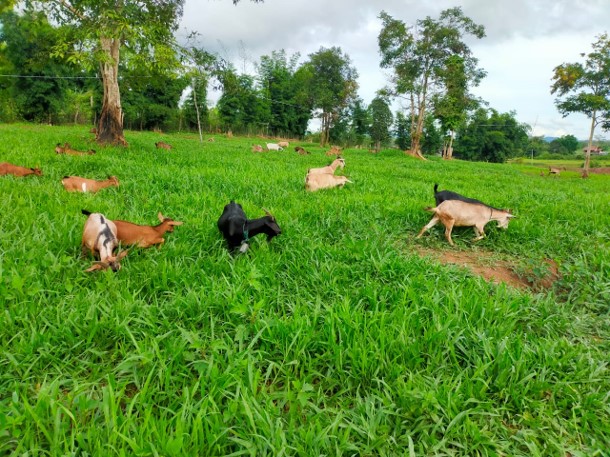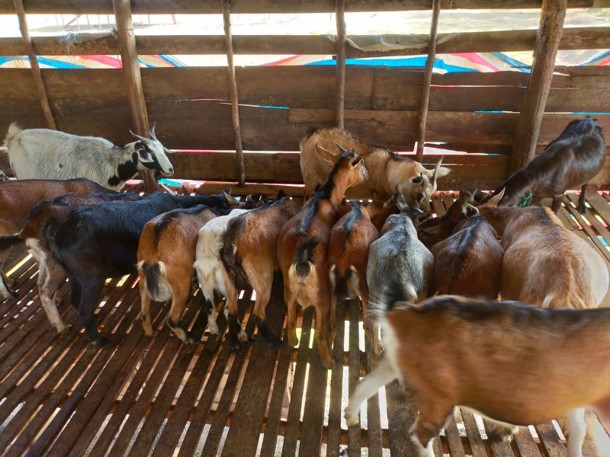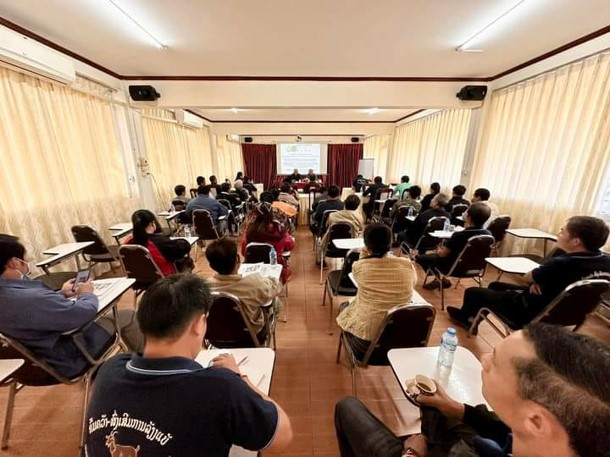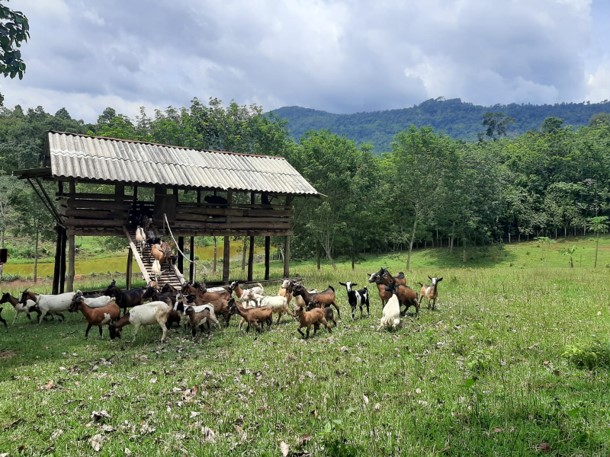As a result of prevailing market and demographic shifts and extreme environmental conditions, global communities are attempting to enhance food security through different sustainable agrifood system transitions. Amidst these transition efforts, there is a growing interest towards smallholder farming and production. However, smallholders have not yet been able to reap the maximum benefit of this interest as they undergo several constraints. Especially in the South East Asian region, smallholders provide the majority of regional agrifood consumption. Nonetheless, they face challenges such as insufficient profits, soil quality degradation and limited resources, extension services, knowledge and market access.

Facilitating smallholder goat production in Laos
According to Dr. Daovy Kongmanila at the National University of Laos (AgriFoSe goat production project coordinator in Laos), one of the main limitations among goat herders in Laos are lack of technical knowledge on feeding goats, making pens and animal health. In order to address these limitations and other challenges, AgriFoSe established a ‘smallholder goat production project in Laos’.
Phase one of the project, named ‘improved goat keeping among smallholders for nutritious diets and increased food security’, was carried out between 2016 and 2020. 1) Goat housing and health management and 2) availability of high-quality healthy feeds for goats were the two key areas identified to address by phase one. Besides, its long-term goal was to increase the smallholder goat herders’ productivity and identify areas where collaborative efforts with policymakers, academia and other sectors can be made to develop goat herding.
‘Improving quality of extension services and access to markets’ is the project’s second phase, and it is currently ongoing. The objectives of phase two are to uplift the quality of extension services for goat production and to improve goat production and market access for smallholder goat farmers. Moreover, phase two focuses on expanding network development and knowledge sharing among goat herders.

So far, the project has carried out different activities closer to the grassroot level of smallholder goat production to accomplish its objectives. Some main activities are stakeholder workshops, training local extension officers by collaborating with researchers, forming goat herders’ groups, conducting surveys to identify demand and supply gaps in domestic and export markets, and other pilot schemes to strengthen market links. Dr. Kongmanila revealed that this goat herding project has been successful, whereas many other similar projects could not reach this level of success. Thanks to this project’s flexibility in planning and functioning, the team could navigate towards and refine its objectives on a rolling basis. The project activities were prioritised and implemented with a guiding agenda which swiftly adapts to evolving scenarios. Such flexibility and agility are seen as one of the key strengths for the project’s success.
Multifaceted outcomes
The direct results of the project are that many participants improved goat production skills, extension officers upgraded their knowledge and competencies to support goat herders, and goat herders increased their trust in and acceptance of extension officers. According to these outcomes, the project significantly impacted scaling up the quality and quantity of the goat production system. It is also a constructive approach to reaching food and nutrition security.
Dr. Kongmanila further depicted, in Laos, “goats are cattle for poor farmers… women also take care of goats”. It suggests improving smallholder goat herding practices also become a crucial factor in increasing goat herders’ income, reducing their poverty and empowering rural women’s role in agrifood systems. Apart from that, as goat herding requires lower threshold or entry point compared to other livestock farming, and could provide a great window for young farmers to set foot in the agrifood systems. At the same time, the project has been influential in incorporating smallholder goat herders into agrifood value chains through improving production quality and quantity and its efforts to establish market access. Connecting smallholder producers to current agrifood value chains is important not only to improve food and nutrition security but also to upgrade rural livelihoods and quality of life.

Realising multiple Sustainable Development Goals (SDGs)
In reviewing these outcomes and effects of this AgriFoSe project, boosting smallholder agrifood farmers is imperative to realise beyond United Nations SDG 2: Zero Hunger. Moreover, supporting smallholders is a part of SDG 8: Decent Work and Economic Growth. It will also play a role in meeting the health and national targets of SDG 3: Good Health and Well-Being. Furthermore, facilitating smallholders is essential to reach SDG 1: No Poverty and SDG 10: Reduced Inequalities. Uplifting the quality and quantity of smallholder food systems, especially in economically fragile countries, is significant in fulfilling the targets of SDG 10 related to sustainable production patterns. Strengthening women’s economic and social stability through fostering smallholder production is another factor that leads to SDG 5: Gender Equality.
This way, promoting and boosting smallholder agrifood producers contributes to multiple SDGs and ultimately leads to greater prosperity. Nonetheless, identifying the challenges and needs of smallholders and their geographical, social and environmental diversities profoundly while having a flexible but target-oriented plan is essential to reap fruitful benefits of supporting smallholders.
